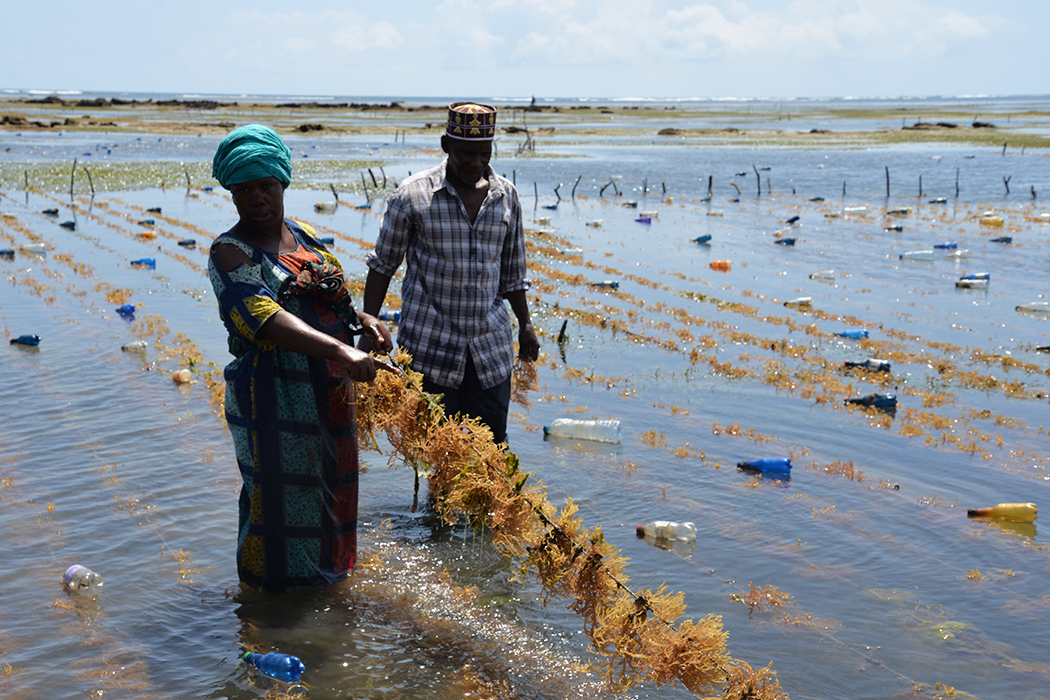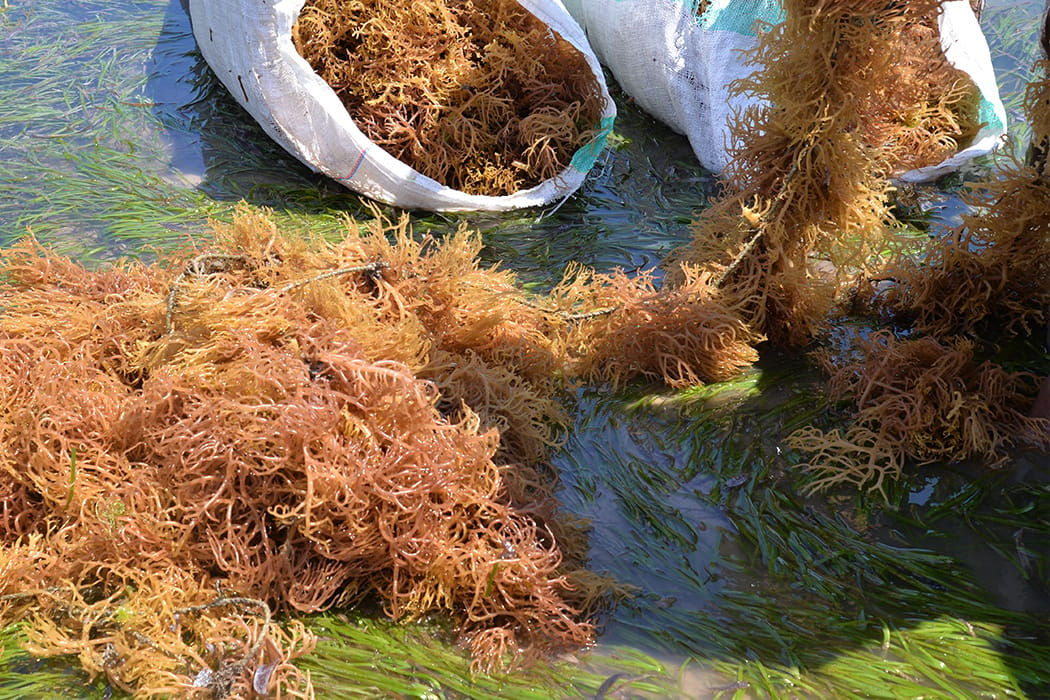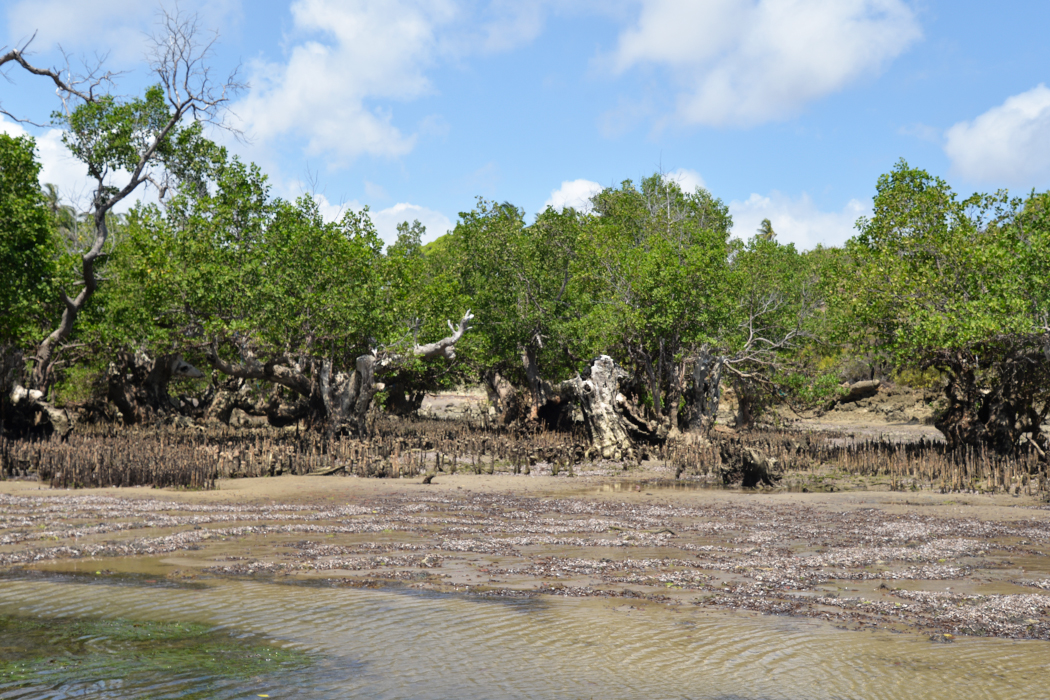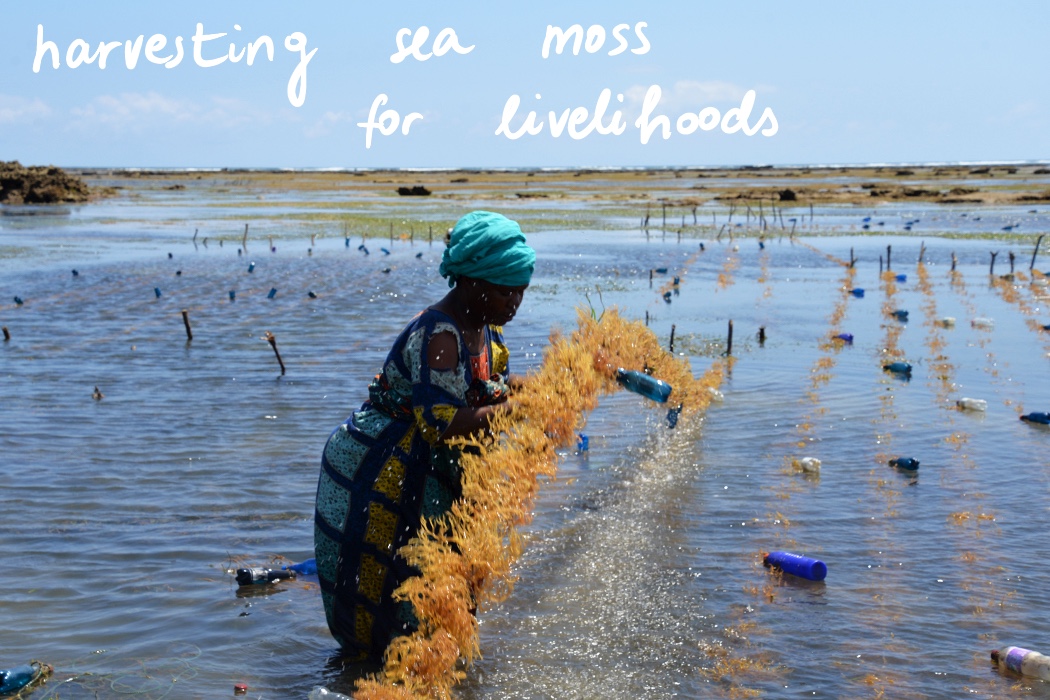
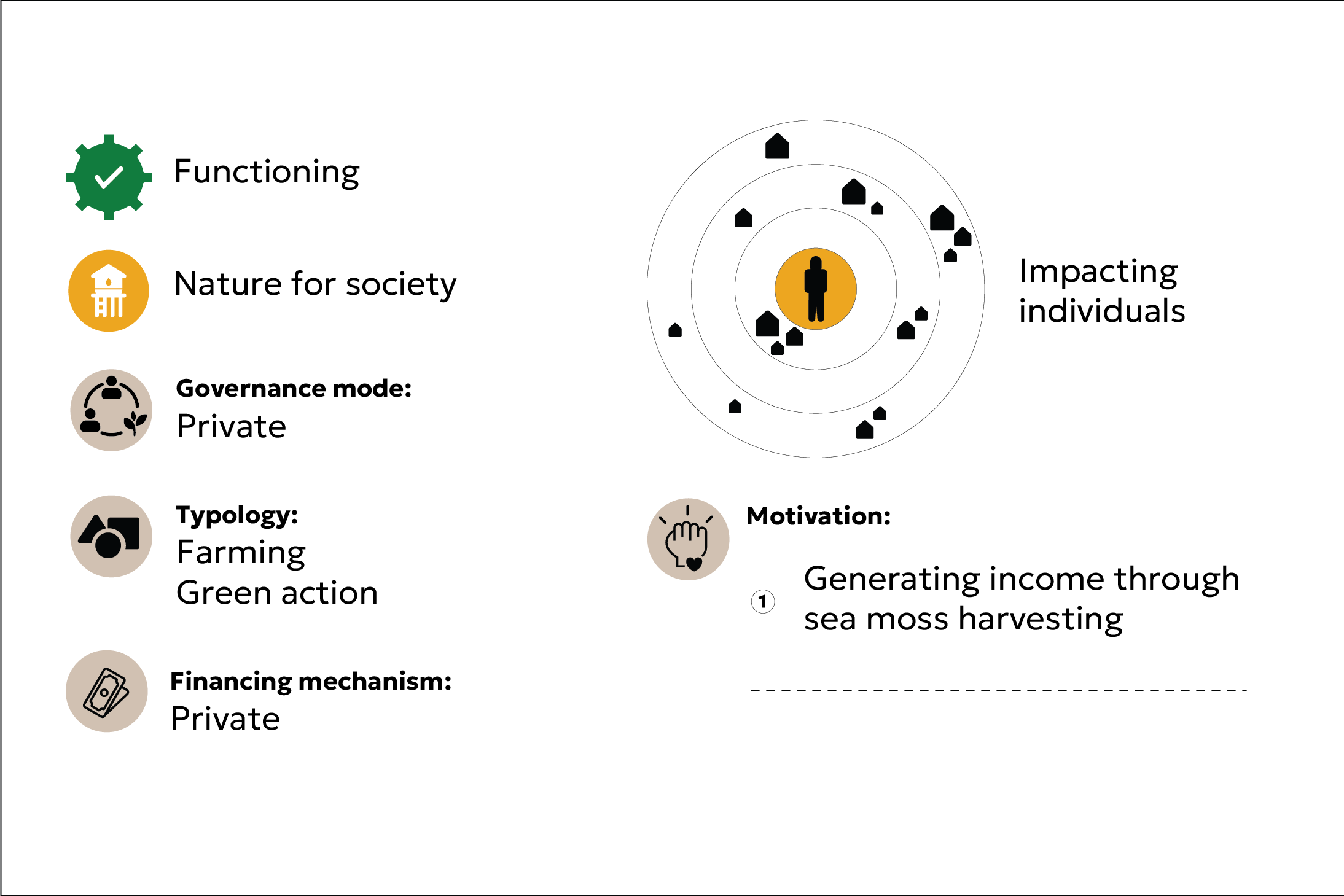
Formed by five community groups, three of which are currently active (Mwani Mwema, Puna Mwani and Umoja Wetu), sea moss farming in Puna Village was introduced in 2015 and revived in 2021 after early setbacks due to sea moss diseases. Each group has around 15 members that farm individually, mostly made up of women, but also counting on men who rely on sea moss farming and fishing activities. Farming is done during low tide, including planting, checking, and harvesting sea moss by hand, using ropes and recycled plastic bottles to keep it afloat. The work provides an alternative to deforestation and illegal fishing, activities previously used to generate income. Supported informally by local leaders and external buyers, farmers sell dry sea moss for export. Despite facing low prices, seasonal production, lack of formal recognition, and difficulty accessing deeper farming areas without boats, sea moss farming remains a valued livelihood strategy with potential for sustainable farming practices.
Working towards justice
The sea moss farming shows a good example of organised community groups where women form a majority of the members and are actively involved in decision-making. These groups contribute to local markets and help maintain the production of goods made of dried sea moss. The arming relies on traditional local knowledge as a vital part of the local economy and culture, being the main source of income for farmers. Currently, these groups seek broader recognition, especially in terms of access to resources to improve their labour conditions and safety in sea moss farming. Farming activities may have health and physical impacts to farmers, which the lack of proper structure can worsen their labour conditions. Although these farming activities have low environmental impact, they are not yet sustainable and hold the potential to cooperate with the oceanic ecosystem.
The potential to benefit people and nature
Sea moss farming in Puna offers a valuable alternative livelihood that has already helped reduce deforestation and dependence on charcoal production and illegal fishing. The initiative opens opportunities to develop products such as soap, lotion, and traditional remedies. There is strong potential to improve working conditions through access to basic tools, especially boats, to reach deeper farming areas more easily. Expanding market access and building connections with reliable buyers would help stabilise income and make farming more sustainable.
This mariculture is a productive use of the marine ecosystem to provide for human needs, representing a long-standing, low-impact method of generating livelihoods from the coastal environment. The critical decline in sea moss, however, highlights an urgent need to shift this practice from purely extractive to actively regenerative. With scientific support, the farmers could pioneer regenerative ocean farming techniques, which would involve actively restoring the coastal habitat and implementing a monitoring system to ensure harvests are sustainable. By doing so, they could transform their practice into a powerful model for climate adaptation—one that not only secures their own livelihoods but also actively restores the health and resilience of the coastal ecosystem they depend on.
